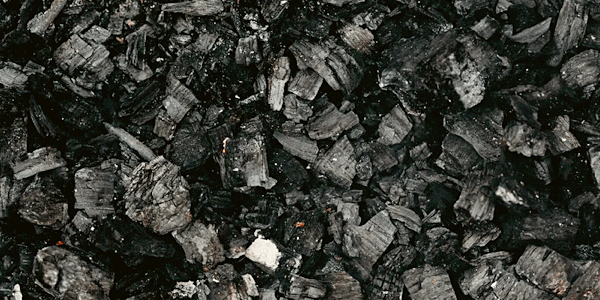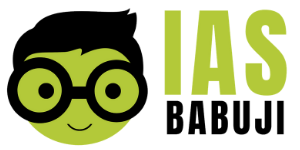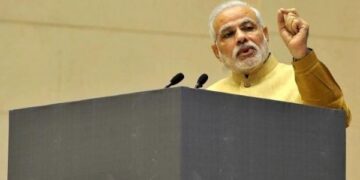Coal mines in India will be discussed in this article. We’ll also go into Coal Mine Reserves, Production, Types, India’s largest coal-producing state, and other details. Also, Candidates will be given a list of India’s most important coal mines and information on their features and locations. This is a significant topic to study for a variety of competitive and government exams. Let’s get this started.
What is Coal?
- Coal is a carbon-based substance used as a fossil fuel. Sulfur, nitrogen, oxygen, and hydrogen are all present in smaller amounts.
- Coalification, a process that takes millions of years to complete, creates from dead and decaying plant debris.
- Converting plant matter into peat is the first step in coalification. Therefore, The heat and pressure then transform it into coal over a long period of time, releasing carbon dioxide, water, and methane in the process.
- Also, Coal refers to “black gold,” “black diamond,” and other terms.
- After China, India is the world’s second-largest coal production.
Vaccine – Meaning, Definition, Types | How to Do Vaccines Work is another significant topic for UPSC. Therefore, Don’t forget to check this link for more information about how vaccines operate, their meaning, types of vaccines, definitions, and other details.
History of Coal Sector in India
- The East India Company began commercial mining of the Raniganj Coalfield in West Bengal in 1774, kicking off the Indian coal industry.
- However, it wasn’t until 1853 that the industry truly took off, thanks to the invention of the steam engine, which increased the demand for coal.
- From a 1 million MT annual production in the 1800s, production climbed by 6 times by 1900 and 18 times by 1920. Hence, coal production increased as a result of both World Wars.
- The five-year program helped boost production to 33 million MT in the post-independence period.
- In 1956, the National Coal Development Corporation was formed to help the industry grow.
- The government decided to nationalize the coal mining industry because of rising demand from the steel industry and inefficiencies in the private sector, such as poor working conditions for miners and unscientific mining processes.
- Private coal mines were nationalized in two stages:
- Coking coal mines were nationalized between 1971 and 1972.
- In 1973, non-coking coal mines were nationalized.
- The Coal Mines (Nationalization) Act of 1973 was passed to nationalize all coal mines in India. In 2018, it was revoked.
- The supply-demand gap began to increase around 1991. as a result, the government decided to authorize captive mining, which is mining for one’s own personal use. Other players are unable to purchase this coal.
- The increasing imbalance between coal demand and supply was exacerbated by power sector reforms in 2003.
- The Coal Mines (Special Provisions) Act of 2015 permitted private companies to re-enter the industry. Also, Coal mines could now be auctioned off.
- The Cabinet Committee on Economic Affairs in 2018 approved the auctioning of mines to private parties based on the highest price per tonne offered.

Types of Coal in India
Based on the amount of carbon in it, coal can be classified into the following types in India:
Anthracite
With a carbon concentration of 80 to 95 percent, this is the best coal available.
In addition, it has a low volatile matter content and very little moisture.
It’s a robust, compact black coal with a semi-metallic gleam.
Of all the coal types, it is the most valuable and has the highest heating value.
In India, it’s only found in limited amounts in Jammu and Kashmir.
Peat
This type of coal has a CARBON content of roughly 40%. It can be found in India’s northeast.
Without being compacted into brick, it is rarely compact enough to create a suitable fuel.
It behaves like wood when left to its own devices, generating less heat, making more smoke, and producing a lot of ash.
Lignite
Lignite coal has a carbon concentration of 40–60%. Brown lignite is a type of low-quality coal.
It creates a lot of smoke but little heat because of its high moisture content (around 35%).
Palna in Rajasthan, Neyveli in Tamil Nadu, Lakhimpur in Assam, and Karewa in Jammu and Kashmir are among the places where it can be found.
Bituminous
Bituminous coal has a carbon concentration of 60–80%. It’s soft coal, and most of the coal in India is bituminous. ‘Black coal,’ as it’s also known
Because of its high carbon and low moisture content, it has a high calorific value.
Because of its high quality, bituminous coal is utilized to generate steam and heat and produce coke and gas.
The majority of bituminous coal is produced in the states of Jharkhand, Orissa, West Bengal, Chhattisgarh, and Madhya Pradesh.
Further, we will discuss top five states in India with the largest coal reserves, the List of coal mines in India, and the largest coal Production state.

Top five states in India with the largest coal reserves
Reserves of coal
- Exploration carried out up to a maximum depth of 1200 meters yielded 319.02 billion tonnes of geological coal resources in the country until April 2018.
- The eastern and south-central portions of the country have the most demanding coal reserves scattered throughout 27 major coalfields.
- The world’s lignite reserves are believed to be over 36 billion tonnes, with Tamil Nadu, India’s southernmost state, accounting for 90% of them.
- The top 5 states in terms of total coal production (Reserve) in India are Jharkhand, Odisha, Chhattisgarh, West Bengal, and Madhya Pradesh.
India has the world’s fifth-largest coal reserves. Therefore, NS Energy examines the top five states in the country in terms of fossil fuel reserves.
In January 2020, the country’s environment ministry approved 14 coal mining and processing projects.
This will assist India in meeting a production target of about 750 million tonnes for the coming fiscal year and may serve as a stepping stone toward its next objective of one billion tonnes by 2024.
The largest coal-producing states in India, according to NS Energy, are:
- Jharkhand – 83.15 billion tonnes
- Odisha – 79.30 billion tonnes
- Chhattisgarh – 57 billion tonnes
- West Bengal – 31.67 billion tonnes
- Madhya Pradesh – 27.99 billion tonnes
List of Coal Mines in India
India has a mineral resource reserve due to its ancient hard rock formations. In India, there are two types of coal distribution:
- 250-million-year-old Gondwana coalfields
- Coalfields that are between 15 and 60 million years old are known as Tertiary Coalfields.
Coalfields of Gondwana:
- Gondwana coal accounts for 98% of India’s total coal reserves and 99% of the country’s coal production.
- Gondwana coal is dry and high in phosphorus and sulfur.
- Because of its much younger age, Gondwana coal has a lower carbon concentration than Carboniferous coal, which is 350 million years old and nearly non-existent in India.
Coal Fields in the Tertiary
- Although the carbon level is low, the moisture and sulfur content is high.
- Extra-peninsular regions are home to the majority of tertiary coalfields.
- Assam, Meghalaya, Nagaland, Arunachal Pradesh, Jammu & Kashmir, West Bengal’s Himalayan foothills of Darjeeling, Rajasthan, Uttar Pradesh, as well as Kerala are all important regions.
The following is a list of coal mines in India, as well as the states and categories to which they belong:
| State | Coal Mines |
| Jharkhand | Ramgarh, Karanpura, Daltonganj, Jharia, Dhanbad, Bokaro, Jayanti, Godda, Giridih (Karbhari Coal Field), Ramgarh, Karanpura |
| West Bengal | Dalingkot (Darjeeling) Birbhum, Chinakuri, Raniganj Coalfield |
| Chhattisgarh | Hasdo-Arand, Korba, Bishrampur, Sonhat, Jhilmil |
| Odisha | Jharsuguda, Himgiri, Rampur, and Talcher |
| Tamil Naidu | Neyveli |
| Maharashtra | Wun field, Wardha, Walarpur, Ghughus, and Warora and Kamptee (Nagpur). |
| Assam | Jaipur, Ledo, Makum, Najira, Janji. |
| Meghalaya | Coalfields of Darrangiri (Garo hills), Cherrapunji, Liotryngew, Maolong, and Langrin (Khasi & Jaintia Hills) |
| Madhya Pradesh | Coalfields in Singrauli, Sohagpur, Johila, Umaria, and Satpura |
| Telangana/ Andhra Pradesh | Kantapalli, Singareni, Kothagudem. |

India’s Largest Coal Mine
The largest Coal mine in India is Deucha-Pachami Mine.
- The Deucha-Pachami-Dewanganj-Harinsinga coal block is India’s largest and the world’s second-largest coal block.
- This mine is located in the Birbhum district of West Bengal, in the Deucha and Panchamati areas.
- Also, the newest coal mine in West Bengal.
- The Birbhum coalfield contains this coal mine or block.
- This coal mine or coal block is Asia’s largest coal mine or coal block due to the number of coal reserves.
- A deep coal seam is trapped between thick layers of rocks in the block, most of which are basalt; the existence of these thick basalt layers makes coal mining problematic; hence, foreign investment and technology will be required to mine these massive blocks.
Conclusion
The following article will provide you with information on India’s coal mines. Also the Reserve of coal, types, and the largest coal-producing state in India, and other relevant data. It is, as previously stated, one of the most important ideas for the IAS exam. As a result, after reading the article, you will better understand Coal Mines in India. Please check the UPSC official website for exams and other important announcements.

FAQ- Coal Mines in India
The Deucha-Pachami-Dewanganj-Harinsinga coal block is the world’s second-biggest coal block and India’s largest. It is situated in West Bengal’s Birbhum district.
The Damuda sequence of rock systems [lower Gondwana Age] is home to 80 of India’s 113 coalfields. Also, Gondwana coal fields produce both coking and non-coking coal and bituminous and sub-bituminous coal.
Anthracite is the highest quality coal, containing 80 to 95 percent carbon. It also slowly ignites with a blue blaze. It has the most calories. Jammu and Kashmir have a little amount of it.
Editor’s Note | Coal Mines in India
In conclusion, we have included all information relevant to India’s coal mines in this article. As part of the UPSC test, one must know about coal mines in India, coal mine reserves, types of coal, the largest state producing coal in India, and other details. As a result, we recommend that you make a list of all the important points that you can review during the exam. Lastly, best of luck.







